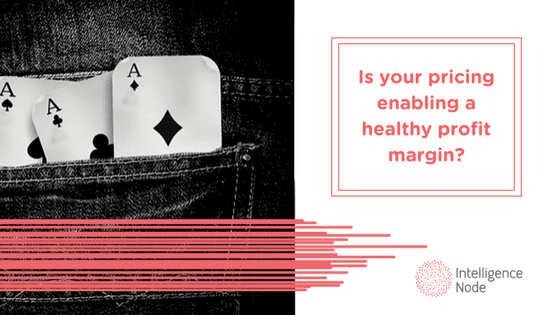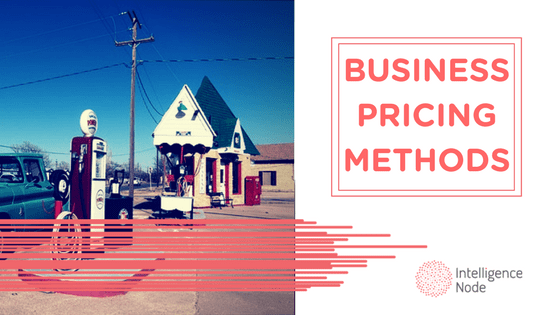When a business sets its pricing policy, it looks to both make and save money while ideally increasing profit margins. This is an ongoing process that demands constant commitment through regular evaluation. Getting the pricing wrong can hurt a business and diminish its profit margins. And we all know that a solid profit margin is an essential part of financial health in the long run.
Profit margin is perhaps the most analyzed number during the company’s lifetime. It is a rather useful pointer that can help a company provide insight about a number of aspects regarding its financial performance, with profit margin fluctuations the ever-present subject of numerous analyses. In broad terms, low profit margins could suggest various problems. For this post, we are sticking with pricing, a very important factor in determining whether a low or high profit margin indicates a profitable business. We will mention different ways how pricing affects your profit margin and is it healthy enough or sustainable.
1. Have a long-term plan
Setting pricing for your goods should be a part of a larger plan, a group of multiple strategies to maximize your profits. A business needs to develop a plan that covers all the little ways of how products get sourced, distributed and sold, all the while monitoring the prices. The main focus is on the level of profitability of every product you sell. Make your items more valuable and competitive but also pay attention to those that may be losing money and turn them around quickly.
2. Avoid same profit margins for different products
What some companies fail to grasp is that price optimization leads to optimized profit. All customers have different perceptions of your goods and they assign different values to those same goods. Every product needs a price that shows the customer’s willingness to purchase it. This is a display of the customer’s perception of the value of your product that ultimately has nothing to do with the profit margin of other product lines.
Take Parker, the motion and control technologies company, as an example. In 2002, a new CEO determined to change the company’s uniform price policy across the entire range of 800,000 products. Understandably, the company was in a profit margin standstill until the change was made to switch to the new pricing scheme. As a result, the company gained over $800 million in profits during the course of seven years by solely focusing on its pricing.
3. Create perceived value with your pricing
A business should always set its pricing so it creates a perceived value for its customers. Perceived value is what essentially delivers purchases by attracting customers. You can see it all the time – people favor some shops because they believe they are getting the best deal around. This may be true most of the time, but even if it is false in reality, the perceived value is what makes them come back.
Naturally, this is all easier said than done, which is why mastering perceived value demands a thorough analysis of large volumes of data to recognize which option is best. Do you lower your prices to appeal to those looking for bargains or do you cater to those willing to pay premium prices because they believe they are getting a product with better quality? As there is plenty of market research involved, creating perceived value is complex, which is why your best bet might be utilizing some form of pricing intelligence software that significantly automates the process.
4. Don’t use cost-driven pricing
Among businesses, one of the basic calculations of setting the prices for goods is by following a simple formula:
- the cost of the product + profit margin = price
It makes sense as you want your pricing to take into consideration the overall cost. However, even if you account the cost correctly and set a healthy profit margin, your pricing might still hurt you. Why? Because of the all-important customer perceived value. Understanding the cost part of the equation is important as there are various costs to account for (materials, time, manufacturing and distributing costs, marketing costs and so on) in order to achieve a reliable profit margin.
Still, basing your pricing on costs rather than customer’s perception of value takes away the customer’s willingness to pay as it might not believe the product is worth the price you set. The price is not the only factor that is important to a buyer. Recognizing and understanding how and why customers value your products will allow you to set a price that truly reflects that value and attain a healthy profit margin.
5. Segment your customers
As we mentioned earlier, customers have different requirements so you need to differentiate them into segments. Chances are, your company attracts a wide array of customers with particular demands and reasons. The value proposition for any of your products (or a variation of it) is different in different market segments. Hence, your pricing must reflect that difference. It should include tailoring the product and pricing strategies to specific customer segments if you want to attain the additional value created by these segments.
Conclusion
Pricing is a vital part of doing business, providing a competitive advantage and higher levels of profitability if done right out of the gate. To do that requires diligent work and keeping in mind the five point above. It all starts with a well-rounded agenda that follows the way of maximizing your profits. This includes having different profit margins for different products that have prices that best reflect the customer’s willingness to pay. Creating perceived value ensures you will attract customers and possibly retain them for multiple purchases. It’s not easy to master but with the right tools, it can be done. Avoid pricing your products based solely on costs – it does not reflect the true value of your product and it will turn your customers away. Finally, don’t treat all your customers the same as they ascribe different values to your products. Instead, align your prices with their value perceptions and enjoy increased profits.
If you found this useful and you’d like to learn how to take your pricing strategy to the next level, we invite you to download our free 20 secrets to designing the best pricing strategy eBook. Click below to take advantage of this opportunity.






